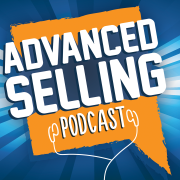The $50 Million Deal
We often hear that our “way” of training and coaching is “great, as long as you’re not going after big deals.” We’ve never bought into that. Yes, it’s harder to detach from the outcome of bigger deals, but changing the way that you think is effective on any deal—$1 or $1,000,000.
We recently had a client land a $50,000,000 deal!
If you’re reading this, you know who you are. For the rest of you, it wouldn’t be cool to “out” our client, so you’ll have to keep guessing!
I wanted to share with you 3 of the fundamental principles that we’ve worked on with them. Please don’t get me wrong, we are not taking credit for the deal – they get that all to themselves. However, I do think they would agree that our work with them helped lay the foundation for a win.
Principle #1: Identifying and Communicating Your Value
• What is value? It is the relief that your prospect feels when you can find and solve a pain they have. Or, the excitement they feel when they recognize the possibility you can help them create with your product/service.
• What it is not. Value is never platitudes, claims or opinions. The more you claim and opine in your statement, the less believable it will be, and the more your prospect will tune out everything else you say.
• It is as if there is a conversation going on inside the prospect’s mind and your expression of your value meets him where he is.
• In creating your value statement, you should make two lists—one of the conscious pains that you help people solve. And the second of the unconscious pains you fix. The secret in this is that the true differential value you bring is in the discovery and solving of the unconscious pains.
Principle #2: Detachment
• What is detachment? The ability to emotionally divest yourself from an outcome that you can’t fully control anyway. We learned from an early age that there was a WIN and a LOSS—a winner and a loser. And we didn’t want to be the loser, so we became attached to the outcome of winning.
• What it is not. There is a difference between detached and “disengaged.” Disengaged is when you don’t care or your mind is distracted. Sometimes people use disengaged as a way to hide their true attachment. They will say things like “do what you want to do,” or “I don’t really care what you do.” Don’t be disengaged. You are attached to the process and detached from the outcomes. But if you become disengaged, you cross the line.
• What happens when you become attached to the outcome?
1. You are unable to take risks
2. You are unable to do the right thing for your prospect or client
3. You sell yourself short, trivializing your value in the process
4. You default to using someone else’s process even though yours has been proven effective• How do you get out of it? Simple. Change thought. Thinking must change from “how will this effect me?” to “how can I contribute to the well being of another (prospect/client)?” Have you heard the saying, “when you’re depressed, go help someone else”? It’s true. So one way to “get out of yourself” is to help someone else. In sales, that usually means the prospect.
Principle #3: Clear Future / Presentation of Solution
• What is a “clear future”? You need to understand the decision making process of your prospect. How does the decision get made? Who makes the decision in their company? Are you talking to them? Can you live with that process of getting to them? When you get really good at managing your process, you will be the only one laying down the decision process – not them.
• Presentation. Present to the pain. If it’s a written presentation, then a review of the pain is in order at the top of the document. If it’s a spoken, delivered presentation, then a review of the pain should happen first. This is not the time to talk to them (your prospect) about all of the other great things you can do for them. DO NOT take your eye off of the ball, and by all means, don’t force them to take THEIR eye off of it either.

